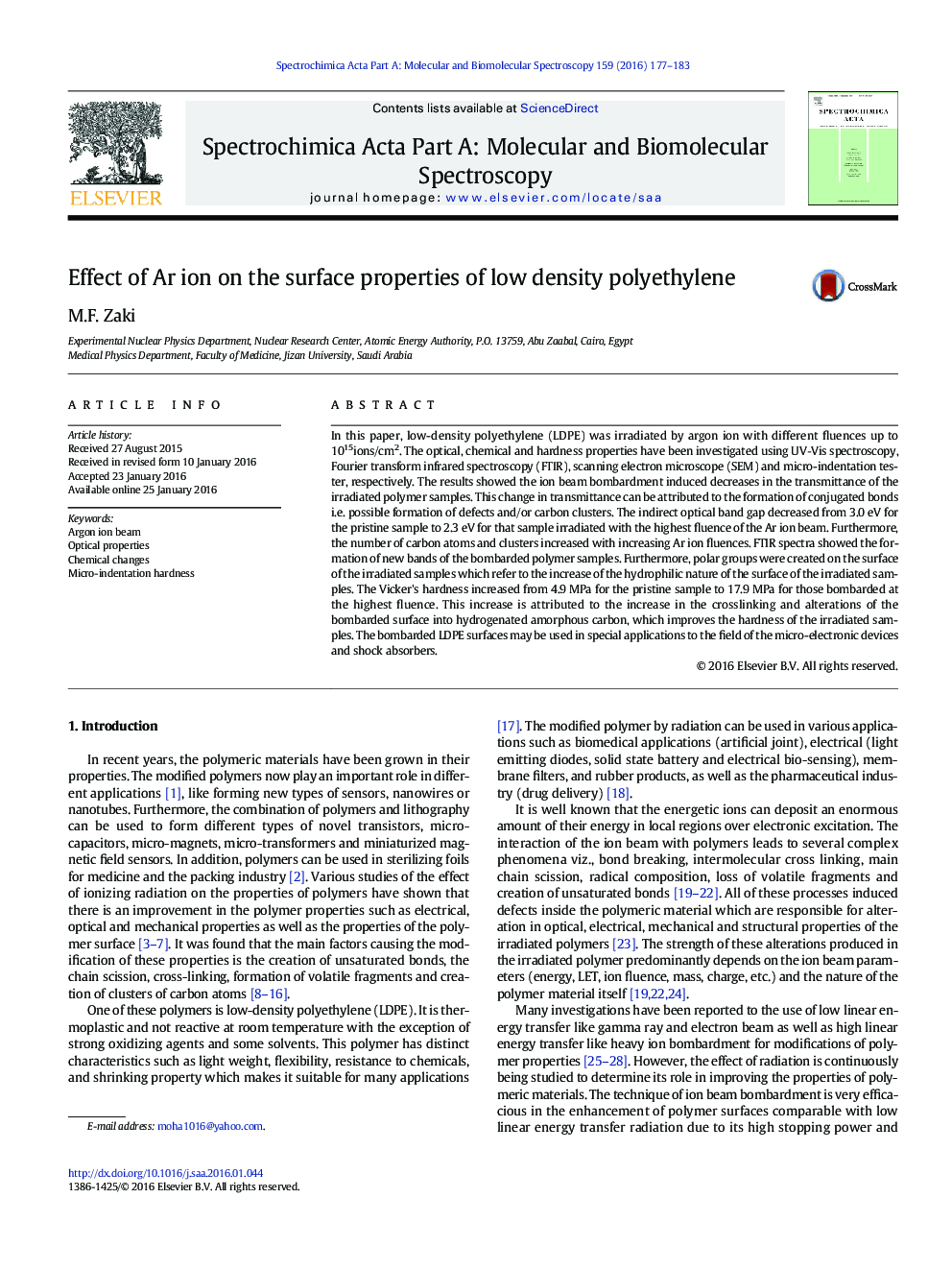| Article ID | Journal | Published Year | Pages | File Type |
|---|---|---|---|---|
| 1228936 | Spectrochimica Acta Part A: Molecular and Biomolecular Spectroscopy | 2016 | 7 Pages |
•Influence of Ar ion on the surface properties of LDPE was studied.•Optical band gap decreases with increasing Ar ion fluence of bombarded LDPE.•Noticeable variation in FTIR was observed in irradiated polymer.•Argon bombardment inducing increase in a micro-hardness surface of bombarded LDPE.•Argon ion beam bombardment modifies the surface properties of LDPE.
In this paper, low-density polyethylene (LDPE) was irradiated by argon ion with different fluences up to 1015ions/cm2. The optical, chemical and hardness properties have been investigated using UV‐Vis spectroscopy, Fourier transform infrared spectroscopy (FTIR), scanning electron microscope (SEM) and micro-indentation tester, respectively. The results showed the ion beam bombardment induced decreases in the transmittance of the irradiated polymer samples. This change in transmittance can be attributed to the formation of conjugated bonds i.e. possible formation of defects and/or carbon clusters. The indirect optical band gap decreased from 3.0 eV for the pristine sample to 2.3 eV for that sample irradiated with the highest fluence of the Ar ion beam. Furthermore, the number of carbon atoms and clusters increased with increasing Ar ion fluences. FTIR spectra showed the formation of new bands of the bombarded polymer samples. Furthermore, polar groups were created on the surface of the irradiated samples which refer to the increase of the hydrophilic nature of the surface of the irradiated samples. The Vicker's hardness increased from 4.9 MPa for the pristine sample to 17.9 MPa for those bombarded at the highest fluence. This increase is attributed to the increase in the crosslinking and alterations of the bombarded surface into hydrogenated amorphous carbon, which improves the hardness of the irradiated samples. The bombarded LDPE surfaces may be used in special applications to the field of the micro-electronic devices and shock absorbers.
Graphical abstractFigure optionsDownload full-size imageDownload as PowerPoint slide
